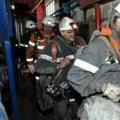Presentation on the topic of ecology and environmental pollution. Presentation on the topic of geography "pollution and environmental protection." Treated milking machines
What is pollution environment?
Environmental pollution - damage caused to nature and the environment
habitat with harmful substances, emissions, waste.
Man has to interfere more and more in the economy of the biosphere.
The Earth's biosphere is currently subject to increasing anthropogenic impact. At the same time, several of the most significant processes can be identified, any of which does not improve the environmental situation in the area.
planet.
ATMOSPHERE POLLUTION
industrySources of pollution
domestic boiler rooms
transport
Table No. 1
TABLE No. 1Industrial
process
Dust emissions, million tons/year
Burning coal.
93,600
Iron smelting.
20,210
Copper smelting (without purification).
6,230
Zinc smelting.
0,180
Tin smelting (without purification).
0,004
Lead smelting.
0,130
Cement production.
53,370
Chemical pollution of natural waters
CHEMICAL POLLUTION OF NATURAL WATERChemical pollution - change in natural chemical properties water
due to an increase in the content of harmful impurities in it, both inorganic and
and organic nature.
The main inorganic pollutants are chemical compounds,
toxic to the inhabitants of the aquatic environment (arsenic, fluorine, copper...)
Organic pollution. Among the soluble substances introduced into the ocean from land,
Organic compounds are also of great importance for the inhabitants of the aquatic environment.
Table. Exposure to inorganic pollutants.
TABLE.IMPACT OF INORGANIC CONTAMINANTS.
Substances
O
Plankto
n
Crayfish
different
Mollusk
And
Fish
Copper
+++
+++
+++
+++
Zinc
+
++
++
++
Lead
-
+
+
+++
Mercury
++++
+++
+++
+++
Cadmium
-
+
++
++++
Chlorine
-
+++
++
+++
Rodanide
-
++
+
++++
Cyanide
-
+++
++
++++
Fluorine
-
-
+
Sulfide
-
++
+
Degree of toxicity: - none
+ very weak
++ weak
+++ strong
++++ very strong
Table. Content of organic substances in wastewater.
TABLE.CONTENT OF ORGANIC SUBSTANCES IN SEWAGE
WATERS.
Polluting
substances
Number in World
stock, million tons/year
Petroleum products
26,563
Phenols
0,460
Industrial waste
synthetic fibers
5,500
Plant remains
0,170
Total:
33,273
The problem of ocean pollution
THE PROBLEM OF WORLD OCEAN POLLUTIONOil and petroleum products are the most common
pollutants in the World Ocean.
Oil and petroleum products. Oil is viscous
oily liquid having a dark brown color.
The main components of oil - hydrocarbons - are divided into
for 4 classes:
- Paraffins (alkenes)
- Cycloparaffins
- Aromatic hydrocarbons
- Olefins (alkenes)
Table.
TABLE.Appearance
Thickness, microns
Quantity
oil
Barely noticeable
0,038
44
Silver
reflection
0,076
88
Traces of coloring
0,152
176
Bright
painted
divorces
0,305
352
Dim
painted
1,016
1170
Dark
painted
2,032
2310
Soil pollution.
SOIL POLLUTION.The Earth's soil cover is the most important component of the Earth's biosphere.
It is the soil shell that determines many of the processes occurring in
biosphere.
The most important importance of soils is the accumulation of organic matter.
substances, various chemical elements, as well as energy. Soil
the cover performs the functions of a biological absorber, destroyer and
pollution neutralizer. If this link of the biosphere is destroyed, then
the existing functioning of the biosphere will be irreversibly disrupted.
Conclusion.
CONCLUSION.Nature conservation is the task of our century, a problem that has become social.
Time and time again we hear about the dangers facing the environment, but
many of us still consider them unpleasant, but inevitable
the product of civilization and believe that we will still have time to cope with
all the difficulties that have arisen
However, human impact on the environment has become alarming.
scale. To fundamentally improve the situation, targeted and
thoughtful actions. Responsible and effective policy towards
environment will be possible only if we accumulate reliable
data about current state environment, grounded knowledge about interaction
important environmental factors if new methods are developed to reduce and
preventing harm caused to Nature by Man.
References.
REFERENCES.1. Environmental chemistry: Trans. with him. / Ed. F. Korte. - M.: Mir, 1996. - 396 p.,
ill.
2. Environmental issues: what is happening, who is to blame and what to do(: Educational
allowance / Ed. Prof. V. I. Danilova - Danilyan. (M.: Publishing house MNEPU, 1997. (332
With.
3. Nebel B. Environmental science: How the world works: In 2 volumes. T. 1.2. Per. from English M.: Mir, 1993. - p., ill.
4. Revel P., Revel Ch. Our habitat: In 4 books. Book 2. Water pollution
and air: Translated from English. - M.: Mir, 1995. - p., ill.
“Ocean Pollution” - Construction of wastewater treatment plants at enterprises. Pollution of the world's oceans. Adult fish are forced to flee the disaster area. Measures to protect the oceans from pollution. The topic of our research is “Pollution of the World Ocean.” We were looking for answers to the questions: How does ocean pollution occur?
“Air pollution from enterprises” - List of sources used: Pnz-1=3.93; pnz-2=3.83; pnz-5=3.72; pnz-6=31.7; pnz-7=2.64; pnz-8=28.35. The Saratov Oil Refinery is an active supplier of pollutants into the atmosphere. Stage 2 Dynamics of atmospheric air pollution in Saratov by main and specific ingredients.
"Pollution Problems" - Acid Rain. Modern man cannot do without chemistry. Greenhouse effect. Nitrogen oxides. Priority in the development of maximum permissible concentrations in the air belongs to the USSR. Nature conservation is the task of our century, a problem that has become social. Fluorine compounds. Pesticides. The problem of controlling the release of pollutants into the atmosphere by industrial enterprises (MPC).
“Water pollution in reservoirs” - Sources of pollution. Before cleaning. N. Foreman. Each ton of oil creates an oil film over an area of up to 12 square meters. km. Death of plants and animals. Uncontrolled algae growth. Waterlogging of the area. Let's save our souls together. Then we will survive on earth ourselves!.. A month after the cleansing.
“Pollution in ecology” - Thermal pollution. Radioactive contamination. Acids. Water problem. Fossil fuel. Nitrogen oxides (NOx). When a liter of fuel is burned, 200–400 mg of lead enters the air. Ecology. Taking care of nature is everyone’s moral duty! Depletion and extinction of species. Automotive danger. Nature is our home.
Effect of nitrogen oxides on humans. Production process of dust emissions, million tons/year. The greatest irritation is caused by noise in the frequency range of 3000-5000 Hz. The influence of noise on humans. Noise is one of the atmospheric pollutants harmful to humans. History of the issue. Air pollution. The average size of aerosol particles is 11-51 microns.
Environmental Pollution
Pollution concept
Pollution is the process of introducing changes of different nature into nature and the human environment, which lead to extremely negative consequences.
What types of pollution are there?
Pollution is classified according to main types:
Biological. This type of pollution is not associated with human activity. This may include extinction or, conversely, an increase in the population of a certain species of animal or bird.
Mechanical. This includes, for example, trampling roads in forests and steppes.
Chemical. Chemical pollution of the environment refers to pollution caused by chemical substances.
In addition, they also emit thermal, noise and other types of pollution.
Environmental pollution includes any change:
At the same time, these changes must somehow threaten the person. Animals and plants.
Anthropogenic pollution.
This is environmental pollution that occurs as a result of human economic activity. These include:
Industry (mainly metallurgy)
Agriculture (field irrigation)
infrastructure and transport (emissions of harmful substances into the atmosphere).
As the population of the locality increases, the percentage of pollution also varies. If in large cities the role of transport accounts for 80% of air pollution, then in rural areas It is mainly the soil that is polluted by developed agriculture.
Greenhouse effect
Air pollution can lead to the greenhouse effect problem. This is the process of accumulation of carbon dioxide in the upper layers of the atmosphere. The greenhouse effect causes temperatures to accumulate and rise. And this threatens with serious consequences for the entire planet.
Water pollution
One of serious problems is the pollution of the world's oceans. Every year tons of oil are released there. They form a film and isolate the flow of oxygen. As a result, many animals and fish simply die. In addition, water pollution reduces the level of fresh water.
Soil pollution.
Deforestation and planting automatically gives rise to the problem of oxygen shortage. All this negatively affects the health of humans and animals.
Pollution problem
Environmental pollution is becoming increasingly widespread. This problem has already become global. Its decision is submitted to the consideration of major international organizations such as the UN. It is necessary to solve the global problem of environmental pollution together.
Environmental pollution
WATER POLLUTION Settlements. The most well-known source of water pollution and the one that has traditionally received the most attention is domestic wastewater. Soap, synthetic washing powders, disinfectants, bleaches and other household chemicals. Paper waste comes from residential buildings, including toilet paper and baby diapers, waste from plant and animal food. Rain and melt water flows from the streets into sewers, often with sand or salt used to accelerate the melting of snow and ice on the roadways and sidewalks.
Industry. In industrialized countries, the main consumer of water and the largest source of wastewater is industry. Industrial wastewater into rivers is 3 times larger than municipal wastewater. Due to the growing volume of industrial waste, the ecological balance of many lakes and rivers is being disrupted, although most of the wastewater is non-toxic and not fatal to humans.
Agriculture. The second main consumer of water is agriculture, which uses it to irrigate fields. The water flowing from them is saturated with salt solutions and soil particles, as well as chemical residues that help increase productivity. These include insecticides; fungicides that are sprayed over orchards and crops; herbicides, a famous weed control agent; and other pesticides, as well as organic and inorganic fertilizers containing nitrogen, phosphorus, potassium and other chemical elements.
Soil pollution Residential buildings and public utilities. Pollutants in this category of sources are dominated by household waste, food waste, construction waste, etc. All this is collected and taken to landfills. Burning garbage in city landfills is accompanied by the release of toxic substances that settle on the surface of the soil and are difficult to wash off with rain.
Agriculture Soil pollution in agriculture occurs due to the introduction of huge quantities of mineral fertilizers and pesticides. It is known that some pesticides contain mercury. Man's desire to take more and more from the soil leads to irrational use of land, and often to the complete disappearance of its fertility. Excessive application of mineral fertilizers and chemicals protecting plants from weeds and pests leads to its contamination. Heavy metals (for example, mercury) and radioactive substances emitted by some industrial enterprises accumulate in the soil. From the soil, these toxic substances enter living organisms, which can cause irreversible changes.
Air pollution The main cause of air pollution is the ingress of uncharacteristic physical, chemical and biological substances into it, as well as a change in their natural concentration. This occurs as a result of both natural processes and human activity. Moreover, it is the person who plays everything big role in air pollution. The cause of most chemical and physical pollution is the combustion of hydrocarbon fuels during the production of electrical energy and during the operation of vehicle engines.
One of the most toxic gases released into the atmosphere as a result of human activity is ozone. Lead contained in car exhaust gases is also toxic. Other hazardous pollutants include carbon monoxide, nitrogen and sulfur oxides, and fine dust. Every year, as a result of human industrial activity (during the generation of electricity, cement production, iron smelting, etc.), 170 million tons of dust enter the atmosphere.
The presentation was completed by Victoria Gushchikhina, a student of grade 11. Checked by technology teacher Kalmykova T.S.
 Harmful working conditions Documents confirming work in hazardous working conditions
Harmful working conditions Documents confirming work in hazardous working conditions Topic in German “Umwelt” (Environment) Message in German on the topic of nature
Topic in German “Umwelt” (Environment) Message in German on the topic of nature How do you understand the main idea of the excerpt from the poem N
How do you understand the main idea of the excerpt from the poem N